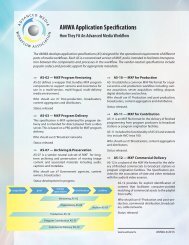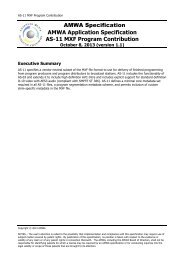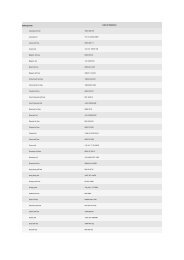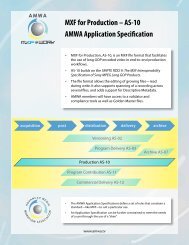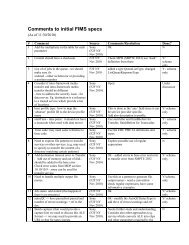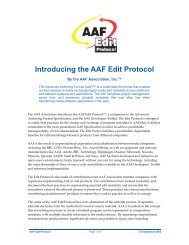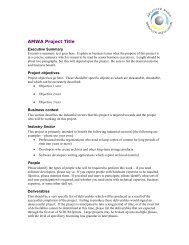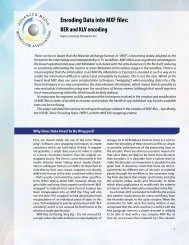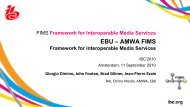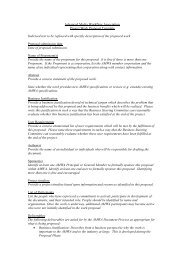Create successful ePaper yourself
Turn your PDF publications into a flip-book with our unique Google optimized e-Paper software.
<strong>FIMS</strong> <strong>Media</strong> <strong>SOA</strong> <strong>Framework</strong> Phase1 (Preliminary)8 <strong>Media</strong> Service Communication8.1 Common properties<strong>FIMS</strong> services share a common object model, which serves two main purposes:• Promote interoperability of data objects between different classes of services;• Promote code reuse. Code libraries that manipulates shared data objects can be reused by differentclasses of services.The <strong>FIMS</strong> object model is described by a set of XML schemas, which provide the object model representationfor common objects and extensions for the different classes of service. Describing the object model as an XMLschema has the advantage of providing a binding-independent representation. The following sections do notdescribe a specific binding (such as <strong>SOA</strong>P/HTTP or REST) but rather focus on the types used to construct thejob request and response messages. This approach has the advantage of describing the structure and thesemantic of messages without placing specific binding constraints.8.1.1 Schema DesignEach <strong>FIMS</strong> service extends the base object types defined in the base schema. These base types model jobrequests and responses for long running, asynchronous operations and provide support for job and queuemanagement tasks. The base schema provides the following key types:• BaseRequestType: a type representing a job request.• BaseResponseType: a type representing a job response.• Business <strong>Media</strong> Object Types: a set of types providing a reference to media content and metadata.• <strong>Media</strong>RequestType: extends the BaseRequestType to model a request that submits media content toa job.• <strong>Media</strong>ResponseType: extends the BaseResponseType to model a response from a job that returnsmedia content.• FaultType: a type representing the base fault, to be extended by each service class for providingservice-specific faults.• ManageJobRequestType: a type representing a job management request, such as pausing orterminating a job.• ManageJobResponseType: a type representing a response to a job management request.• ManageQueueRequestType: a type representing a queue management request, such as stopping orrestarting a queue.• ManageQueueResponseType: a type representing a response to a queue management request.• ListQueueRequestType: a type representing a request to list queued jobs.• ListQueueResponseType: a type representing a response to the list queue request.• <strong>Media</strong>ServiceEventType: a type representing an event generated from a <strong>FIMS</strong> service, such as a jobevent, queue event, system event or service event.8.1.2 Message Format and PatternsThe pattern adopted for message formats is based on the Command Message pattern. Messages use the typesdefined in the base schema or extended types. The base types used for messages are described in the followingsections.Private committee documentWorking Draft for review by <strong>FIMS</strong> Rev v1, Nov-16-2010 Page 33 of 89



